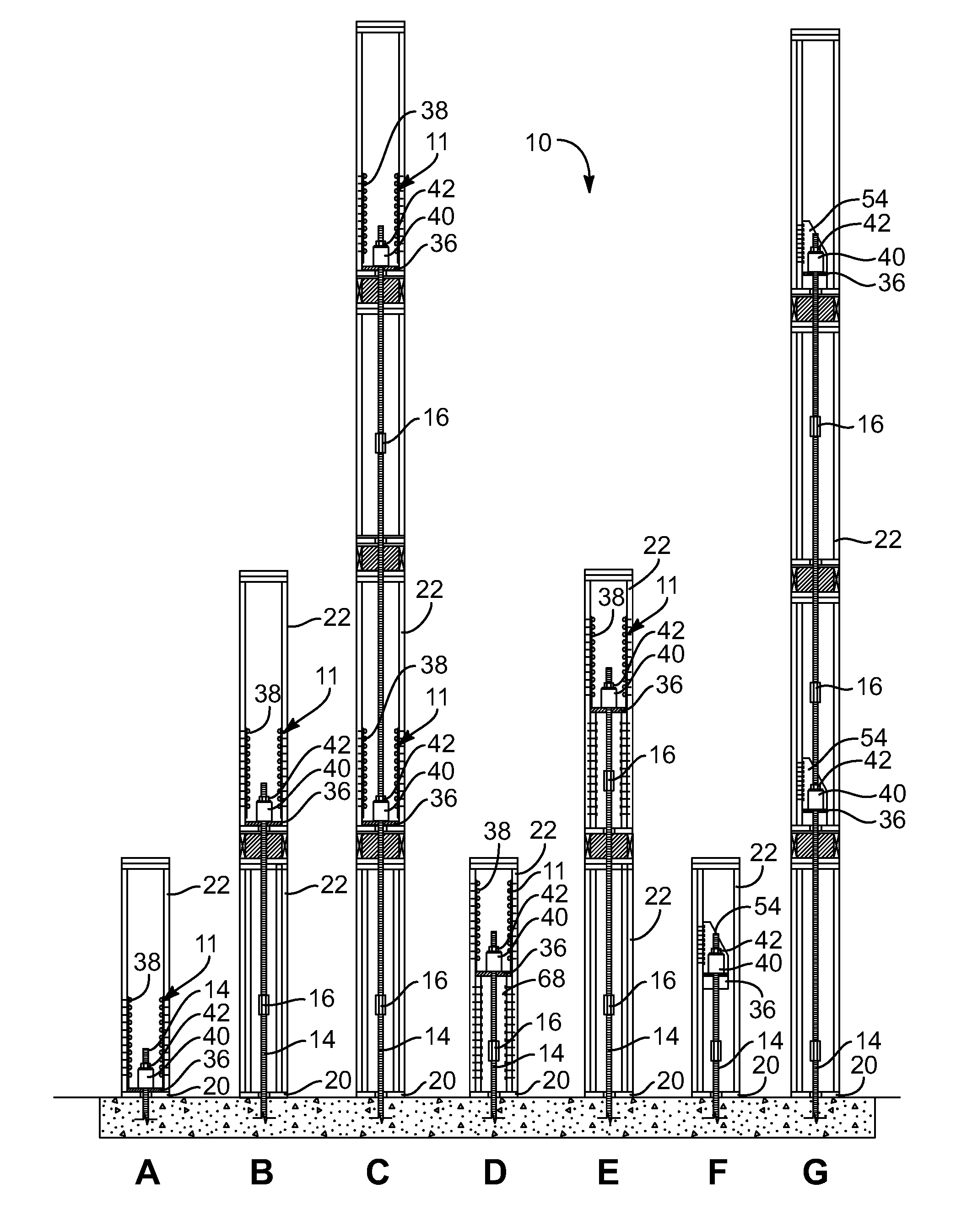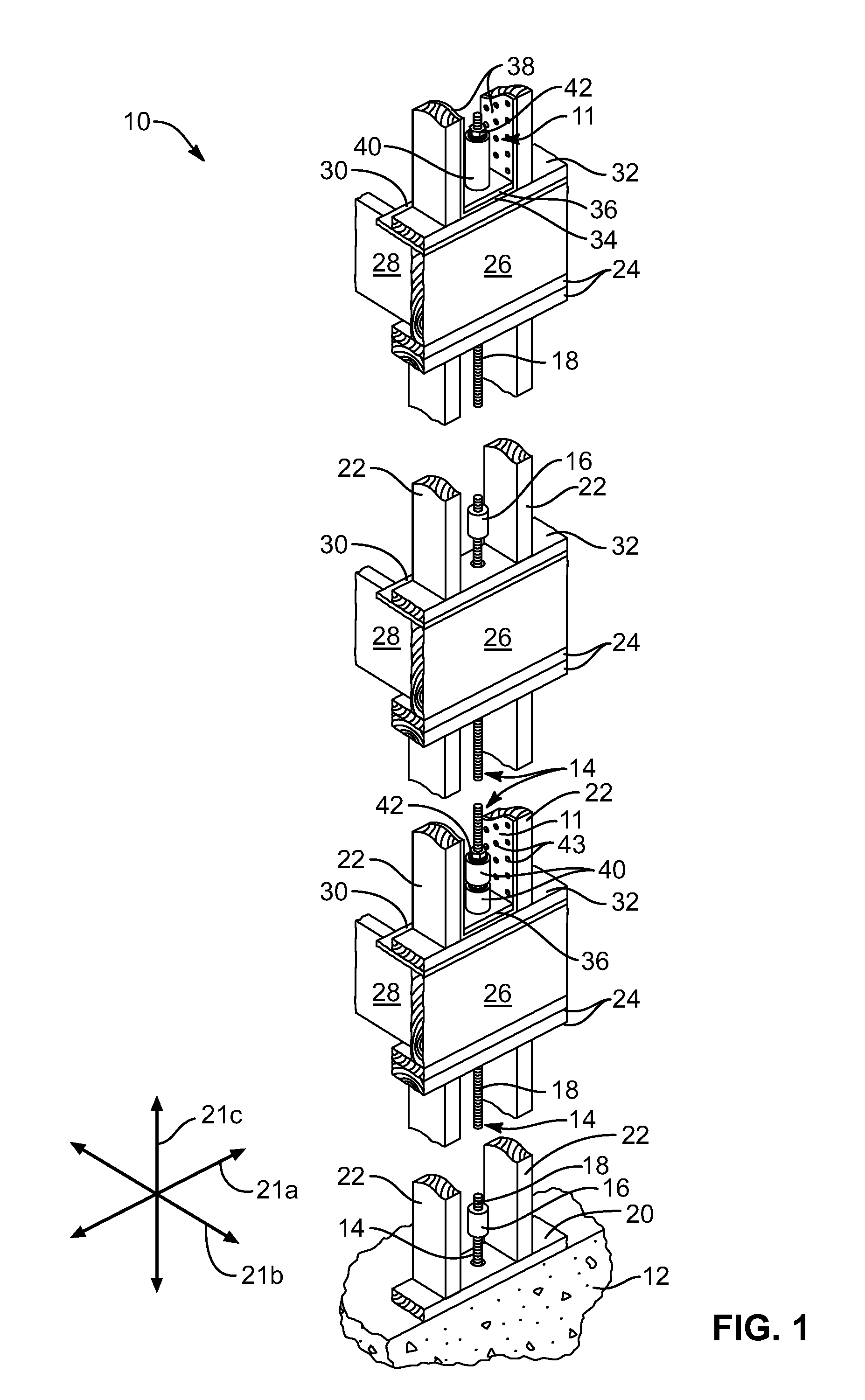Double-duty, hold-down system
a technology of holding down system and shear wall, applied in the field of building construction, can solve the problems of building torn apart, structural failure, subject walls and other elements of the building to tremendous forces, etc., and achieve the effects of reducing hardware, sacrificing building anchoring capacity, and reducing the difficulty of installation
- Summary
- Abstract
- Description
- Claims
- Application Information
AI Technical Summary
Benefits of technology
Problems solved by technology
Method used
Image
Examples
Embodiment Construction
[0033]Referring generally to FIGS. 1-8, those of ordinary skill in the art will, of course, appreciate that various modifications to the details of the Figures may easily be made without departing from the essential characteristics of the invention. Thus, the following description of the Figures is intended only by way of example, to simply illustrate certain embodiments consistent with the invention, and is not intended to limit the scope of the invention.
[0034]The scope of the invention is as broad as claimed herein. The illustrations are merely representative of certain, illustrative embodiments of the invention. Those embodiments of the invention will be best understood by reference to the drawings, wherein like parts are designated by like numerals throughout. A trailing letter after a reference numeral in the Figures simply indicates a specific instance of the item otherwise indicated by the reference numeral.
[0035]Several Figures display an automatic take-up unit. This device...
PUM
 Login to View More
Login to View More Abstract
Description
Claims
Application Information
 Login to View More
Login to View More - R&D
- Intellectual Property
- Life Sciences
- Materials
- Tech Scout
- Unparalleled Data Quality
- Higher Quality Content
- 60% Fewer Hallucinations
Browse by: Latest US Patents, China's latest patents, Technical Efficacy Thesaurus, Application Domain, Technology Topic, Popular Technical Reports.
© 2025 PatSnap. All rights reserved.Legal|Privacy policy|Modern Slavery Act Transparency Statement|Sitemap|About US| Contact US: help@patsnap.com



